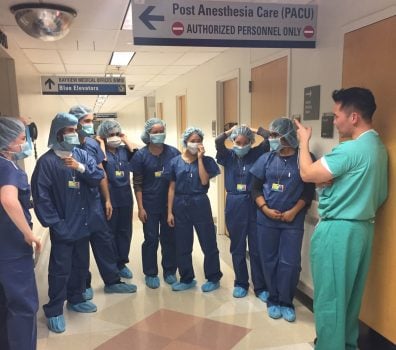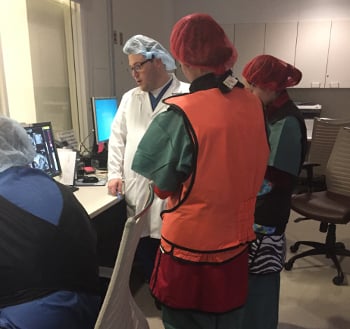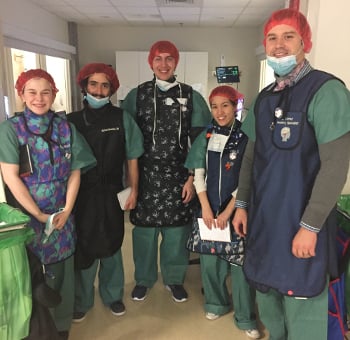For two weeks, these students observed interventional radiology, endoscopy, and a variety of surgeries from hip replacements to craniotomies to learn the skills needed to become leaders for next year’s undergraduate design teams.
The students worked side-by-side at the Johns Hopkins Hospital and the Johns Hopkins Bayview Medical Center with top clinicians, learning how to identify clinical problems and design effective solutions.
They observed up to four procedures each day, taking detailed notes on processes, equipment, and issues. The student participants say that this up-close-and-personal vantage point gave them the ability to identify underlying issues that otherwise might go unnoticed.
“Surgeons may tell you a specific problem they have, but we may discover an underlying issue to resolve, which can end up solving the problem as well. They teach us to look for the actual need that’s present,” says junior Clark Fischer.



